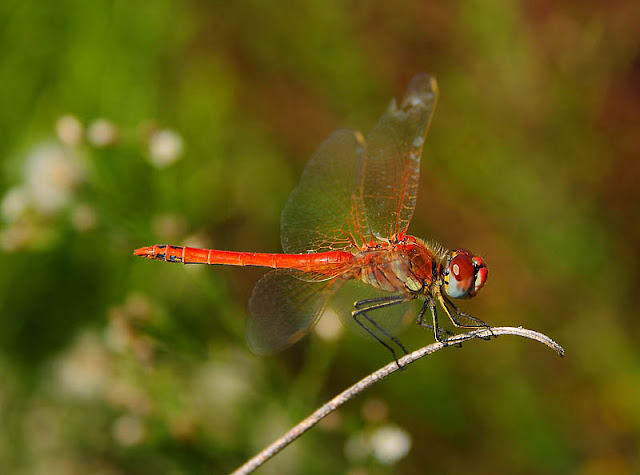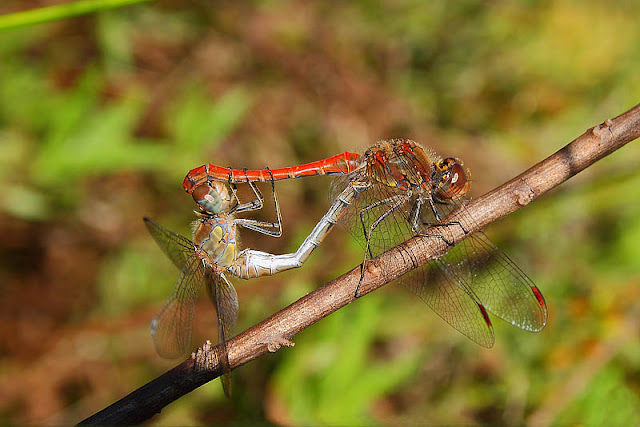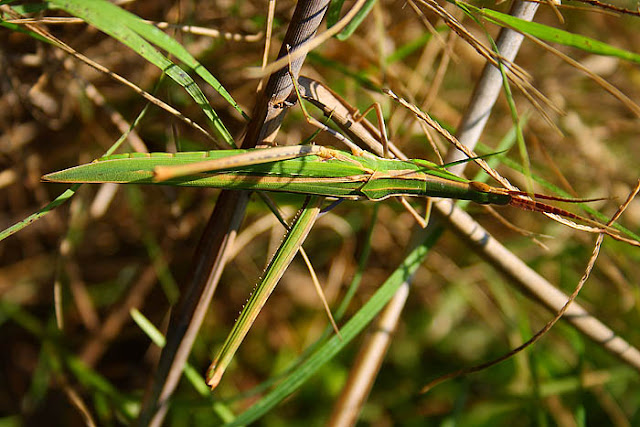The Red-veined Darter (Sympetrum fonscolombii) is a dragonfly of the genus Sympetrum. It is a common species in southern Europe, including most Mediterranean islands; in Africa, the Middle East and south-western Asia including India, Sri Lanka, and Mongolia; Azores, on the Canary islands and Madeira.
+male.jpg) |
| Red-veined Darter (Sympetrum fonscolombii) male (© 2012 LightColourShade. All rights reserved) |
.jpg) |
| Mating Red-veined Darters (Sympetrum fonscolombii) (© 2012 LightColourShade. All rights reserved) |
.jpg) |
| Speckled Wood (Pararge aegeria aegeria) (© 2012 LightColourShade. All rights reserved) |
This creature is either a Giant Slant-faced Grasshopper (Acrida conica), Family Acrididae, native to Australia), or Mediterranean slant-faced (Acrida ungarica), since I can't tell them apart.
The protective colouring of this grasshopper is so efficient that it completely blends into the environment, and it's really hard to pick out the camouflaged insect from the grass. At first, I thought it was a bunch of grass leaves, until it dawned on me that grass doesn't have eyes!
.jpg) |
| Giant Slant-faced Grasshopper (Acrida conica) (© 2012 LightColourShade. All rights reserved) |
| Six-spot Burnet (Zygaena filipendulae). (© 2012 LightColourShade, by-nc-nd) |
My granddaughter and her friend from girl scouts just had a session at our local zoo devoted to insects. It's too bad that your wonderful pictorial wasn't there for me to show them yesterday. I guess, I'll have to tell them about your website, as they live a state away (in Arkansas). So, you might just have a couple of little visitors to your site.
ReplyDeleteAs you know, I love bugs!
I'm glad to hear that. It's really important to instill love for nature and its creatures into children from an early age. I love bugs, too, especially dragonflies and butterflies, so I hope I'll take more bug pictures in the future.
DeleteYour butterfly is a Speckled Wood. Marsh Fritillary looks different :).
ReplyDeleteThe moth is a Burnet moth, probably the Six-spotted Burnet (Zygaena filipendula).
Thanks for pointing it out, you're right -- the butterfly id Speckled Wood (Pararge aegeria aegeria), so I've corrected the caption. I'm not even sure why I put Marsh Fritillary there.
DeleteAs for the moth, I haven't done much research about it since I'm going to try to take better shots of this bug in summer. You're right it's a Six-spot Burnet (Zygaena filipendulae).